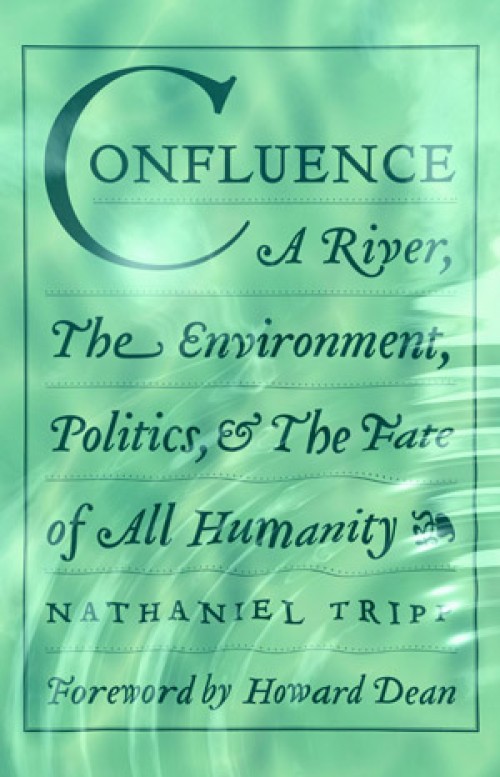by By Nathaniel Tripp
Steerforth Press, 2005
This is a powerful book. It is relatively short as well, and if you are lucky enough to be able to read it over the space of a few days, it will work on your psyche the way a really good poem works.
It will haunt, evoke, remind, return. Images will float to the surface and get tangled up with your daily life; you will find yourself thinking about sediment as you set the table, the changing lives of the Cree as you drive to work. It is concentrated like a poem, too, and gains momentum as it goes, the way water moves downhill.
Mainly what will stick with you when you are finished, though, is the author’s powerful, articulate voice, at times kind and humorous, at times outraged. Having lived on a farm in the Connecticut Valley since 1973, having served as chairman of the river’s bi-state Joint Commissions, negotiated with power companies over the river’s use, and turned to it as a source of healing after his return from Vietnam, Tripp knows the Connecticut River well. He is advocate and admirer, educator and fighter, friend.
In Confluence: A River, The Environment, Politics & The Fate of All Humanity, Nathaniel Tripp takes an unflinching look at the politics that have shaped the Connecticut River, undermined its banks, changed the course of its 410-mile run to the sea into a series of lakes, devastated local economies (at times by drowning them) and divided neighbors’ common interests. He covers the politics of the Atlantic salmon (and a genetically modified alternative, the Frankenfish), the physics of flow, the beauty of meandering (to which he relates the Coriolis effect of the earth’s spin), a river’s surprising hunger for sediment, water-powered mills, and the ecological consequence of the river’s hydroelectric dams.
Tripp, whose memoir, Father Soldier Son, was a New York Times Notable Book of the Year, is a wonderful writer. His prose is both down to earth and eloquent, the very best of combinations. Here he describes the headwaters of the Connecticut on the Canadian border on a day in early spring:
Here, just above the forty-fifth parallel, halfway between the Tropic of Cancer and the Arctic Circle, the time of snowmelt is thrilling, immobilizing, often cataclysmic. Water gathers in every hillside cleft and starts to wear its way down, an annual passion play reenacting the withdrawal of the glacier ten millennia ago. Frozen waterfalls of ice – turned blue or green or rust red from mineral springs – begin to weep from rock faces, and the frozen earth turns to soup, closing the back roads and skid trails. The water swirls under ice, rises more and sculpts fantastic shapes.
It is typical of the author that in this elegant passage about the mysteries of spring, he includes a reference to skid trails. Throughout, he makes plain that real environmentalism is inclusive: “It includes the human, the social, and the economic environment. It does not see humankind as a separate entity, apart from the rules of nature. It recognizes the oneness of our own circulatory system with that of the river. It places consideration before exploitation.”
One of the challenges of living in our society, at least for anyone paying the least bit of attention, is how to live with all the bad news about the environment without succumbing to cynicism or despair. Confluence will help you keep your eyes open and take heart.


